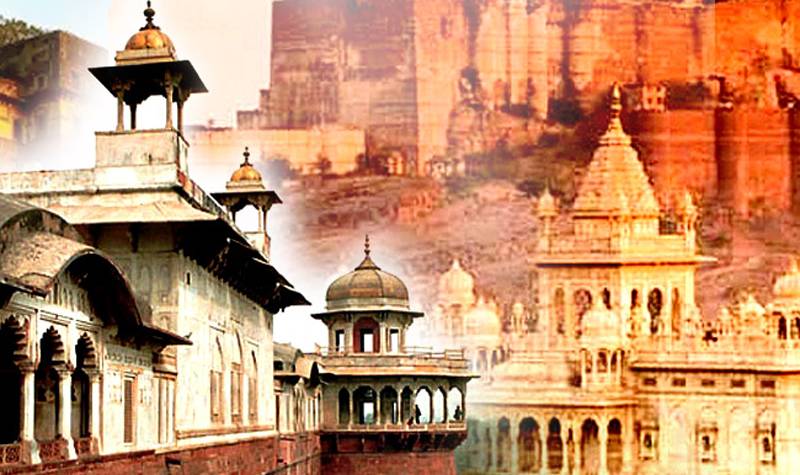Agra is situated in the doab region of two rivers Ganga and Yamuna. Therefore, the fertility of this land is so good for growing many corps. As far as historical text is concerned in context of History of Agra, it varies from time to time. The name of this city comes from Sanskrit word “Agravan” that means ‘front of the forest’. According to the great epic Mahabharata, Agra used to be a territory of lord Krishna’s father which used to be surrounded by forest. So, The Mahabharata is the first historic text which talks about this city. The other interpretation of “Agravana” is this abode of Aryans. But one of the leading names who mentioned the name of this city as Agra is Ptolemy in his book.
The History of Agra came into light during the 11th century when Mahmud of Ghazni who hailed from Afghanistan invaded India. In those days, the Hindu king “Jaypal” used to be a ruler of this territory. Like many other Indian kings Jaypal also lost the battle to Mahmud of Ghazni consequently Agra had to face the wrath of invading king and was totally demolished and plundered. Masud sa’d Salman, who used to be a court poet of Mahmud of Ghazni has widely written about invasion in his book. He explained that invasion as a nightmare.

In 1504, during the tenure of “Sikander Lodi”, the Muslim ruler of Delhi Sultanate moved his capital from Delhi to Agra City. Now, Agra was on driving seat due to its status enjoying as a capital of India. Sikander Lodi is known as a founder of this city who has distinct place History of Agra. The grandeur of this city could not be maintained for a good span of time and the reason behind this saying is the incompetence of in his successor “Ibrahim Lodi” to protect his kingdom. In 1526, History of Agra has seen first battle of “Panipat”, “Babur” the founder of Mughal dynasty defeated Ibrahim Lodi the last ruler of Lodi dynasty. Babur stayed in this city and built many gardens and steps-well. He was a great lover of nature. But the founder could not explore the region for long time as his reign was short-lived. And his son “Humayun” was not as able and competent as his father and was defeated by “Sher Shah Suri”.
During the stint of “Akbar”, the History of Agra changed for good when Agra became capital of India from 1526 to 1648. The third Mughal ruler Akbar, who made his best possible effort to decorate this city by way of erecting Agra Fort, Akbar's Tomb, and Fatehpur Sikri which is around 45 km away from Agra. The fifth Mughal ruler Shah Jahan shifted his capital from Agra to Delhi. The capital of India became like a shuttle it means the distance is covered between two cities. In 1658, Shah Jahan who built the Taj Mahal was dethroned by his son Aurangzeb, and he moved capital back to Agra till his death.
The builder of Taj Mahal, Shah Jahan was arrested by his son Aurangzeb in 1558 in Agra fort till his death. The fifth Mughal ruler Shah Jahan died in 1666, and later he could find the place next to his beloved in the Taj Mahal and it is known as a final resting place of king and queen. The tenure of Shah Jahan was from 1628 to 1658. During this period, the enlargement of Agra Fort was done, and so many buildings within Agra Fort have been refurbished.
The mosque was commissioned by Shah Jahan in the honor of Jahanara Begum Sahiba who was the eldest daughter of the king in 1648 which took around 6 years to build. The beauty of the mosque is breathtaking and is situated in the down-town of the city. Being one of the largest mosques in India, more than 10,000 people can be congregated at any time of the day. The reign of Aurangzeb saw many ups and downs.
The post-Mughal the era was not long enough. Maratha could not hold this for long period. In 1803, East India Company conquered Agra from Maratha. Under the English era, Agra became a part of North West province of India and during the Indian rebellion of 1857, this city was the center to fight against English. Agra city has witnessed rise and downfall of mighty empires of India. Hence, the city has gone through a lot of changes with the emergence of each new empire, thereby, carving a very unique place the history of India.

